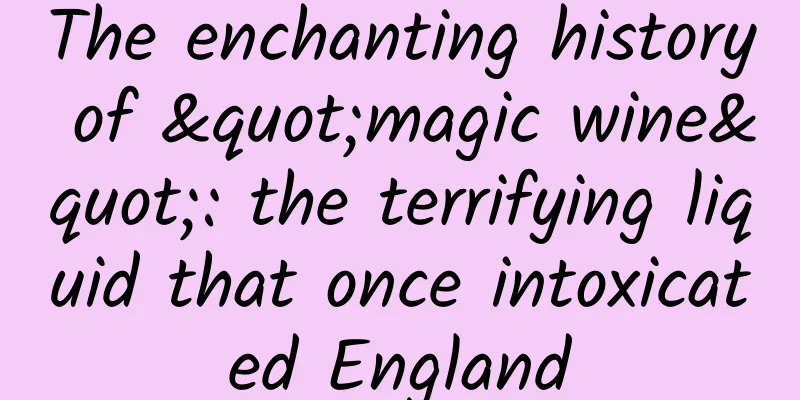The enchanting history of "magic wine": the terrifying liquid that once intoxicated England

|
William Hogarth, Gin Lane, 1751. © www.metmuseum.org Leviathan Press: Gin’s introduction to England was an intoxicating and pernicious affair. Drinkers reported a range of reactions: loss of mind, madness, ecstasy, even death. With the help of prints by George Cruikshank, William Hogarth, and others, James Brown traveled to these addictive haunts—pubs, gin parlors, barbershops— that offered either pleasure or perniciousness, depending on who you asked. In 1751, the printmaker and satirist William Hogarth created Gin Lane, his famous visual review of the devastating effect that gin, a new spirit, was having on the lives of London’s poor. This work complements Beer Street, a harrowing panorama of poverty, addiction, insanity, violence, infanticide, and suicide; amid the chaos and despair, the only prosperity is Gripe, a pawnbroker who undertakes funerals , and two businesses that provide "deadly beverages": a gin tavern and Kilman, a distiller. Beer Street (left) and Gin Alley (right). © www.metmuseum.org According to Hogarth’s biographer, Gin Lane’s “ fractured, disintegrating scene…is deeply imprinted in the mind ”. Its derivatives have become so popular with political cartoonists that they feature so often and effectively at academic conferences on the history of alcohol that the Gin Lane sirens are now heard on social media. Yet, as fascinating as this image is, its dominance in the history of alcohol and art obscures a wider range of subtle and distinctive accounts of gin and the contexts in which it was consumed in the eighteenth and nineteenth centuries. Cursed Wine Gin was one of a host of new human intoxicants, including chocolate, coffee, opium, sugar, tea and tobacco, which greatly expanded Europeans’ possibilities for altering their consciousness during the period known as the psychoactive revolution (1600-1800). Since the late Middle Ages, spirits (primarily the crude distillate of wine, or "aqua vitae") had been made in monasteries, private homes and apothecaries' shops in England, although they were expensive, usually used for medicinal purposes and in limited quantities. The explosion of brandy, rum, whisky and especially gin in the late 17th century was due to a number of factors - a glut of grain, restrictions on the import of French wine, the relaxation of the distilling monopoly and increased taxes on ales and lagers - but the rise of gin was particularly rapid. Originally imported from the Netherlands as “Genever” (derived from juniper berries, the main flavouring ingredient in gin), gin was mass-produced by domestic malt distillers in the 1690s, who sold wholesale to a range of small blenders who would “correct” it with a variety of botanicals, including juniper berries, coriander seeds, orange peel, liquorice powder and rosin. According to Cumbrian distiller George Smith in 1725, gin had "acquired such universal acclaim, especially among the common people...that in many stills, more is daily sold of it than both lager and ale, in most public bars". The resulting drink was much stronger than the traditional alcoholic beverages (ale, lager, cider and wine) that had previously dominated both recreation and food, and represented a major change in England's drinking culture; Jessica Warner even called it "the first modern medicine" . In short, gin meant something very different to early modern drinkers, offering not a gradual descent into intoxication but an instantaneous, extreme intoxication . This high also spawned a host of perverse and horrific side effects widely discussed by 18th-century commentators, including moral degradation, crime, madness, compulsive poisoning, and death. As an anonymous writer in 1736 observed, “A person who takes a small amount of gin becomes almost instantly intoxicated, so as to lose all reason and control of his actions.” Similarly, in her 1750 treatise aimed at female gin drinkers, Eliza Haywood warned that whereas traditional drinks made their consumers “sullen, drowsy, or exceedingly merry”, gin made them “bold, obstinate, and filled with a wild desire to do evil… the pure consumption of strong liquors, we may say, is the speediest way of depriving mankind of their reason, and replacing it with a madness that is at first temporary, but ultimately permanent”. The following year, another anonymous writer agreed: “[Gin’s] pernicious influence penetrates deeply into their souls; every high moral principle is uprooted and destroyed.” Moreover, “once they have formed the habit of drinking, they are not satisfied until the glass is off their noses.” This makes gin's unique physiological and psychological effects a recurring contemporary metaphor, that of being bewitched, of subjugating normal human will and talents to a hidden supernatural force. Thomas Rowlandson, watercolor, The dance of death: the dram shop, 1816. © wellcome collection Hotbed of mischief: The gin pub Like other new intoxicants, gin created a whole new urban space organized around its sale and consumption. Just as cocoa gave rise to chocolate houses, coffee to coffee houses, opium to opium dens, and tea to teahouses and tea gardens, gin gave rise to pubs, which were described by contemporaries as “wretches’ dens,” “hotbeds of mischief,” or “cradles of all evil and sin.” The emergence of such venues was primarily in the towns, but spread rapidly from the early 18th century onwards: in 1726, a committee of judges in Middlesex estimated that there were 6,000 gin houses in this suburb of London alone, with some parishes accounting for as much as one in five gin houses . As the etching below shows, the gin was far more humble than the traditional inns, pubs and ale houses that had previously made up England’s restaurant system, which had become increasingly sophisticated and regulated under Hanoverian regulations. To start selling alcohol, all that was needed was to find a supply of “harmful beverages” (either distilled on site or purchased from a specialist manufacturer). Anonymous engraving, The Gin Tavern, 1765. © wellcome collection The shops’ tables and chairs are deliberately sparse to encourage takeaway sales and “standing drinking,” both of which ensure a rapid flow of mainly poor customers who don’t have the money for extended on-site drinking . One of the spatial innovations of gin bars, borrowed from the booming retail industry, is the bar, despite the conventional wisdom that these bars are a feature of established drinking establishments where drinks are delivered from the basement to lobby and private dining room patrons by a team of bosses, waiters, waitresses and bartenders. As architectural historian Mark Girouard notes, the bar was a revolutionary "breakthrough in time and motion," making service more convenient and efficient; it also brought additional advantages, such as separating waiters from patrons, providing a surface for measuring and pouring drinks, and forming a barrier to safely store drinks, serving utensils, and revenue. Fluid trajectories In addition to being sold and enjoyed in these specific venues, gin was also a nearly ubiquitous substance, seeping into existing venues and spaces. As the above etching of a waitress pouring the drink suggests, gin’s widespread popularity proved unstoppable. This "mad pour" was incorporated into the business of traditional inn, pub and alehouse owners, especially in rural areas, and was also widely sold in cafes, grocers, delicatessens, pawnshops and tobacco shops - this was because retailers dealing in non-alcoholic goods could also sell gin without the need for licence or regulation. With takeaway sales accounting for a significant portion of the tavern’s business, gin was widely consumed in homes and private residences, and could even be enjoyed while having a haircut or shave – as in the case of the sex workers and sailors in the engraving below. The engraving of gin being served in a barbershop (below) provides a visual counterpoint to the deceased barber in Hogarth’s Gin Lane, who is driven to bankruptcy by his dirty, gin-addled customers. Hand-colored engraving from 1793, with the text below: "A shave for a penny, a haircut for less than twopence, a glass of gin for a bargain." © wikimedia Hand-colored engraving, circa 1792. Depicting a prostitute in her room, a gin goblet can be seen next to a washtub. © wikimedia George Cruikshank, Mrs Topper's Dream, c. 1812. This hand-colored lithograph shows a sailor and his wife in bed, with a small bottle of gin visible on the table. © wikimedia Like tea and saloop (a hot drink made from powdered orchid roots that originated in the Ottoman Empire), gin, the “burning substance from hell,” is also consumed outdoors. In fact, Gin Alley is a nightmarish version of open-air drinking. As well as being sold in specialist shops, gin was sold in sheds and stalls in alleyways, consumed in the streets, and - like other foods of the period - sold by itinerant vendors, especially at mass entertainments such as executions. William Hogarth, The Lazy Apprentice Executed at Tyburn, 1747. On the right side of this engraving, a street vendor dispenses glasses of gin from a cart. © wikimedia The most famous depiction of this scene is Hogarth’s The Idle Prentice Executed at Tyburn, in which a street vendor sells gin from a horse-drawn cart at the scene of a public execution. There are also less common scenes, such as James Gillray’s 1795 etching Copenhagen House, which shows a vendor hawking gin at a busy and boisterous meeting of the London Corresponding Society. James Gillray, Copenhagen House, 1795. In the left-center foreground of this hand-colored lithograph, a female wine merchant in a headscarf sells gin at a meeting of the London Corresponding Society. The Society was a debating society inspired by the French Revolution that advocated for democratic reforms of Parliament. On the far left, three chimney sweeps, their brass caps bearing the names of their masters, add their names to a list of famous political rebels. Their signed gin barrel reads: "Thelwall & Co.'s True Democratic Gin," a reference to John Thelwall, a radical journalist and political reformer who co-founded the Society. The association with gin here was probably due to its low cost and ready availability to the poor, making it a democratic and accessible form of intoxication. © wikimedia Like coffee, gin was sold in temporary or “pop-up” venues in parks and fairs. Frost fairs were held regularly whenever the Thames froze over. During the 1814 freeze, tents called “Orange Boven” and “City of Moscow”, the latter featuring a lifelike statue of the Duke of Wellington, sold gin. 1814 hand-colored woodcut of Frost Fair on the River Thames. In the center of the picture, two makeshift tents are used to sell gin. © britishmuseum.org Between 1729 and 1751, a series of laws enacted by the central government led to a gradual decline in gin drinking and its associated venues and spaces in the late 18th century , although tax cuts in the early 19th century sparked a revival in consumption and the creation of another innovative venue: the gin palace. The Gin Palace enjoyed a decade of heyday from the 1820s (when the term was coined), and these luxurious venues were characterized by a series of novel architectural styles borrowed from the retail industry: the ubiquitous bar, but now also large expanses of glass façades, punctuated by columns and caps, rococo details, gas lighting inside and outside, large barrels containing various styles of gin, and a wealth of inscriptions. The latter emphasized the long association of intoxicated spaces with text (bars and coffee houses were the main sites for the circulation and consumption of books, newspapers and other printed materials), and as we will see below, the extensive use of labels and legends in the Gin Palace provided some inspiration for cartoonists. Charles Dickens described a typical gin palace in 1836: Everything was bright and splendid. Yonder there rose the melodious roar of a splendid public-house, which marked the centre of the two streets opposite. That gay building, with its richly ornamented parapet, its luminous clock, its plate-glass windows surrounded by stucco ornamentation, and its gas-lamps richly gilded with precious metals, was a dazzling contrast to the darkness and squalor we had just left. The interior was even more splendid than the exterior. A French-carved mahogany bar ran the length of the space; on either side were rows of huge barrels, painted green and gold, and enclosed by light brass rails, on which were inscribed such inscriptions as "Old Tom, 549"; "Young Tom, 360"; and "Samson, 1421," which we presume mean "gallons." Behind the bar was a tall, spacious hall filled with equally charming vessels, and surrounded by a gallery of equally sumptuously decorated vessels.[16] It was in these posh places, and at the same time as gin was thriving again, that an organized temperance movement began to take shape. Led by coffee retailers, doctors, evangelists, and industrialists, and those who believed strongly in the detrimental economic, medical, moral, and social effects of alcoholic beverages, the Temperance Society actively advocated against recreational drinking and, ultimately, abstinence from alcohol altogether. This reform imagination was fundamentally spatial; as Brian Harrison notes, if their “vision of entertainment centered on the home,” the new-fangled gin palace was both a symptom and a symbol of the corrupting evils of alcohol. In addition to mobilizing through pamphlets, maps, and songs, temperance reformers made their case through the medium of images. Luke Limner's 1847 engraving comparing a traditional tavern to a modern gin palace. © wellcome collection George Cruikshank's Drinker At the forefront of the Prohibition war was the cartoonist George Cruikshank. Born and raised in London, he was, like his contemporaries James Gillray and Thomas Rowlandson, an heir to the visual tradition of Hogarth. Cruikshank was a prolific and successful commercial cartoonist, producing more than 6,000 drawings for books, magazines and pamphlets during his long career. Gin and its palaces feature prominently in the vibrant life and immersive scenes of London that he excelled at depicting. Early designs, such as his illustrations for Dickens's Sketches by Boz and Pierce Egan's novel Life in London (a bestseller in 1821), are generally friendly and affectionate; the venues are attractive and the patrons are mostly happy, healthy and respectable. This may reflect the central and active role that Gin and the Gin Palace played in Cruikshank's own life during that period. While he does not appear to have suffered from alcohol addiction or pathological drinking, like most 19th-century creators he was a habitual drinker and was known for his love of sociability. Cruikshank's illustration for Piers Egan's London Life, c. 1820, showing Tom and Jerry in their gin palace. © wellcome collection Left: Cruikshank's illustration for Dickens's The Notes of Boz, c. 1836, showing the interior of the Gin Palace. Right: Cruikshank, The Gin Palace, c. 1842. © archive.org In 1847, at the age of 55, Cruikshank underwent a dramatic change, enthusiastically embracing prohibitionism. His decision may have been a response to the ill health he was facing at the time, or it may have been inspired by the fate of his father, the illustrator Isaac Cruikshank, who was said to be a complete alcoholic who died of alcohol poisoning at the age of 46 after winning a drinking contest. Whatever his motivations, from the moment he joined the temperance movement, Cruickshank developed what Richard Vogler has called an “evangelical concern for the evils of alcohol,” supporting and illustrating the National Temperance Association and becoming particularly critical of gin and gin palaces, which he would reimagine in his later work. In his most famous series, The Bottle (1847), eight engravings chart the disintegration of a family, while the opening scene of the more striking follow-up, The Drunkard's Children (1848), is set in a gin palace. The drunkard's adult daughter is framed at the center of "that fountain which nourishes all kinds of crime"; she is approached by a shawl-draped madam, surrounded by a ragtag group of people, including drinking children and a drunken disabled man. All of them are dwarfed by huge barrels of wine, ironically printed with the words "Cream of the Valley" and "Famous Double Gin". Other depictions from this period show hopeless drunks stumbling and falling in front of the gin palace's door. In the third of Cruikshank's The Bottle, 1847, the doomed family drug themselves with gin while bailiffs remove their furniture. In the five subsequent paintings, the situation deteriorates. © www.bl.uk Cruikshank’s most strikingly negative depiction of the Gin Shop, entitled The Gin Shop, dates from 1829, nearly two decades before he gave up drinking. In this work, he imagines the Gin Shop as a terrifying and dangerous space of death, foreshadowing his later anxieties, albeit in a comic rather than realistic pictorial language. The ill-fated offspring of the Gin Palace are depicted in the opening chapter of Cruikshank's The Drunkard's Children (1848). © wellcome collection This print depicts another doomed family: the gin barrel is designed as a coffin, served by a skeleton disguised as a barkeeper, and another skeleton holding an hourglass and a spear, threatening them. George Cruikshank, The Golden Tavern, 1829. © www.bl.uk As with the Gin Palace itself, Cruikbank often uses titles, dialogue boxes, and other textual forms to emphasize his points. Gins are named "Demon Slayer," "Blue Ruin," and "Death's Kindness," signs point to and foreshadow "The Workhouse," "The Lunatic Asylum," "The Prison," and "The Gallows," while a skull grimly foreshadows "They've Almost Had Their Last Drink." In a pun that links gin's harmful effects to the malignant supernatural, a little demon dances around a cauldron and chants an incantation in the "spirit vaults." By James Brown Translated by tim Proofreading/tamiya2 Original text/publicdomainreview.org/essay/liquid-bewitchment/#p-1-0 This article is based on the Creative Commons License (BY-NC) and is published by tim on Leviathan The article only reflects the author's views and does not necessarily represent the position of Leviathan |
Recommend
What is considered a good self-media background? Which one is better, Toutiao or Penguin?
A few days ago, at a "copycat press conferen...
6 Success Principles of KOL Marketing for New Consumer Brands
The collective rise of a number of new consumer b...
These mobile phone functions and skills can solve holiday battery anxiety
Although there has not been a revolutionary impro...
Does the liver have a male or female counterpart? Staying up late for a long time may turn a male's liver into a "female liver"...
People are divided into male and female, and in f...
iOS 18 hidden feature, supports T9 dialing!
In the first beta version of iOS 18, Apple finall...
Apple's new patent: The strap can power the Apple Watch
According to foreign media reports, the US Patent...
A must-go place for tea drinking and tasting in Kunming, with its own high-end studio
Kunming tea tasting has its own studio. Recommend...
Wild rabbits are a disaster in Australia, and Sichuan people are very "anxious"
Audit expert: Ran Hao Well-known science writer W...
Xiaomi Mi 5 will be released in January, why was it released ahead of schedule?
[[125354]] Editor’s Note: This time, the high-con...
Qiangzi: How do I generate traffic to earn over one million in a year? 【Video explanation】
Preface Don’t know how to attract traffic? Here c...
The next decade: artificial intelligence
GroupM Global released a report titled " The...
Dong Mingzhu plays up internet celebrity marketing, but consumers don't seem to be interested
Gree's Sejie mobile phone, which was launched ...
These data are quite "hardcore"!
On March 8, the second "Minister's Chann...
Huawei executive: It will take many years to develop its own alternative to Google
Huawei is struggling to replace Google apps on it...




![Meiyajia: Quickly and easily understand store operations [WeChat Enterprise Account Case]](/upload/images/67ebf28d46903.webp)




